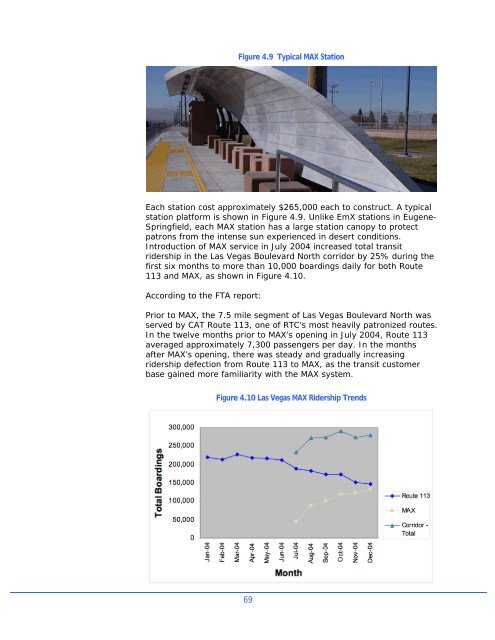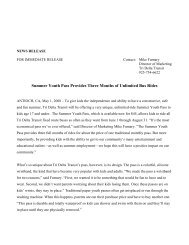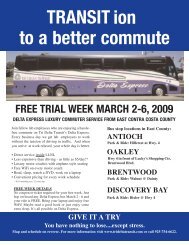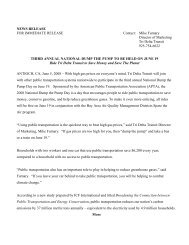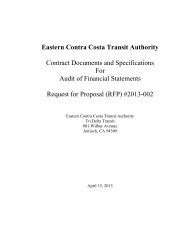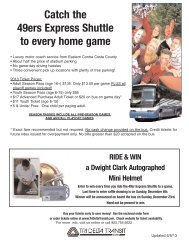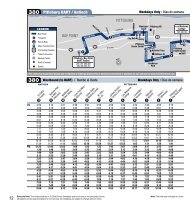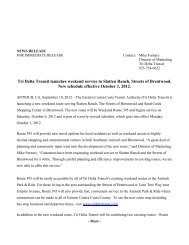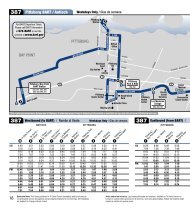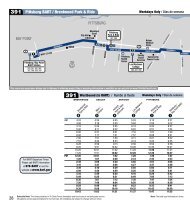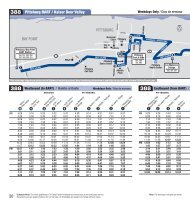to view Short Range Transit Plan FY 2007/2008 - Tri Delta Transit
to view Short Range Transit Plan FY 2007/2008 - Tri Delta Transit
to view Short Range Transit Plan FY 2007/2008 - Tri Delta Transit
You also want an ePaper? Increase the reach of your titles
YUMPU automatically turns print PDFs into web optimized ePapers that Google loves.
Figure 4.9 Typical MAX StationEach station cost approximately $265,000 each <strong>to</strong> construct. A typicalstation platform is shown in Figure 4.9. Unlike EmX stations in Eugene-Springfield, each MAX station has a large station canopy <strong>to</strong> protectpatrons from the intense sun experienced in desert conditions.Introduction of MAX service in July 2004 increased <strong>to</strong>tal transitridership in the Las Vegas Boulevard North corridor by 25% during thefirst six months <strong>to</strong> more than 10,000 boardings daily for both Route113 and MAX, as shown in Figure 4.10.According <strong>to</strong> the FTA report:Prior <strong>to</strong> MAX, the 7.5 mile segment of Las Vegas Boulevard North wasserved by CAT Route 113, one of RTC’s most heavily patronized routes.In the twelve months prior <strong>to</strong> MAX’s opening in July 2004, Route 113averaged approximately 7,300 passengers per day. In the monthsafter MAX’s opening, there was steady and gradually increasingridership defection from Route 113 <strong>to</strong> MAX, as the transit cus<strong>to</strong>merbase gained more familiarity with the MAX system.Figure 4.10 Las Vegas MAX Ridership Trends69


